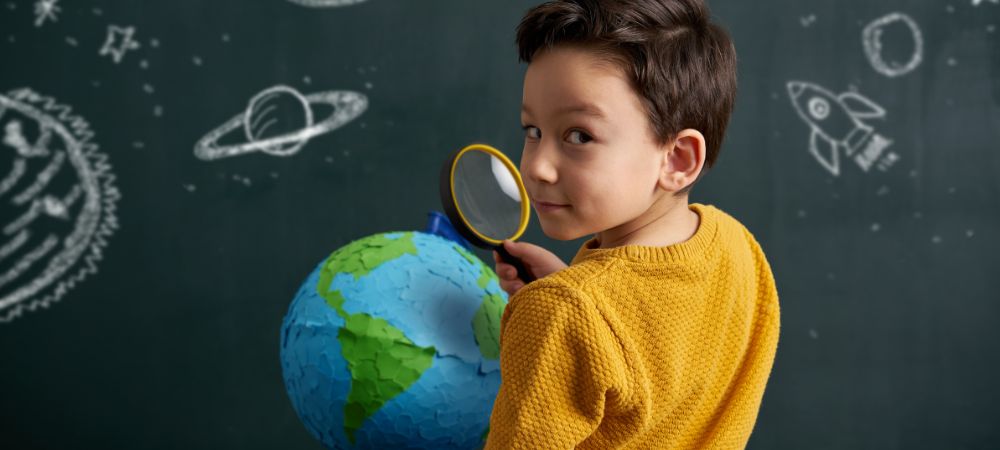

Multicultural education be a approach to teachin' that aims to celebrate diversity and promote understandin' of different cultures. Access more information see that. It not just about toleratin' differences, but about embracin' 'em and learnin' from 'em. Multicultural education don't jus' focus on race or ethnicity, but also considers factors like gender, sexual orientation, religion, language, and socio-economic status. It's important for students to learn about all these aspects of diversity so they can become more empathetic an' open-minded individuals.
By incorporatin' multicultural perspectives into the curriculum an' usin' diverse materials in the classroom, educators can help students develop a broader worldview an' appreciate the richness of different cultures. click on . This can lead to greater social harmony an' respect among students from various backgrounds.
Despite some criticisms an' challenges associated with multicultural education, such as resistance from certain groups or lack of resources, it remains a valuable tool for creatin' inclusive learnin' environments where all students feel valued an' respected for who they are. So let's embrace multicultural education an' work towards buildin' a more tolerant an' equitable society for all!
Incorporating diverse perspectives in the classroom is super important for multicultural education. It helps students to gain a better understanding of different cultures and backgrounds, which can lead to more empathy and tolerance. By not including diverse perspectives, students may miss out on valuable learning experiences that can broaden their horizons.
Having a variety of viewpoints in the classroom allows for richer discussions and debates, as well as promoting critical thinking skills. When we don't include diverse perspectives, we are limiting the potential for growth and learning among our students. Additionally, it can help to break down stereotypes and biases that may exist within the classroom.
By incorporating diverse perspectives, we are creating a more inclusive and welcoming environment for all students. It shows them that their voices matter and that they have a place at the table. Without diversity in the classroom, we are doing a disservice to our students by not exposing them to different ways of thinking and being.
Overall, incorporating diverse perspectives in the classroom is essential for promoting multicultural education. It enriches the learning experience for students and helps to create a more inclusive environment where everyone feels valued and respected. Let's make sure we are actively seeking out diverse viewpoints to enhance our educational experiences.
In the USA, public institution teachers invest an standard of $479 out of pocket yearly on class products, highlighting funding spaces.
Internationally, over 260 million kids and youth ran out institution as of 2018, underscoring relentless obstacles in global education accessibility.
The globe's earliest continually running college, the College of Al-Qarawiyyin in Morocco, was established in 859 advertisement by a lady, Fatima al-Fihri.
The international student market is valued at over $300 billion yearly, showing the substantial financial influence of worldwide education exchanges.
Technology plays a crucial role in modern education, there's no doubt about it.. It has revolutionized the way we learn and teach, making the process more interactive and engaging.

Posted by on 2024-05-02
Standardized testing, like, plays a big role in holding schools and educators accountable, you know?. It helps to measure students' knowledge and skills in a consistent way across different schools and districts.

Posted by on 2024-05-02
Parental involvement in schools and at home, it can have a big impact on student success in education.. When parents are involved with their child's schooling, they can help to motivate them and support them in their learning journey.

Posted by on 2024-05-02
So, let's talk about the importance of lifelong learning in staying relevant and adaptable.. Education is not just something you do when you're young and in school - it's a journey that lasts your whole life.

Posted by on 2024-05-02
In today's fast-paced world, it's important to keep up with the latest developments in your field.. By continuously updating your skills and knowledge through lifelong learning, you can ensure that you stay competitive in the job market.

Posted by on 2024-05-02
Promoting cultural understanding and inclusivity be important in multicultural education. It help students to appreciate differences, learn from each other, and work together better. There be many strategies that can be used to promote cultural understanding in the classroom. One strategy be to incorporate diverse perspectives into the curriculum. This can include readings, discussions, and activities that highlight different cultures and traditions. Another strategy be to create a welcoming and inclusive environment where all students feel valued and respected. Teachers can also encourage open communication and dialogue about cultural differences, so that students can ask questions and share their own experiences.
Inclusivity be another key aspect of promoting cultural understanding in multicultural education. It involve ensuring that all students have access to the same opportunities and resources, regardless of their background or identity. Teachers can promote inclusivity by providing support for students who may feel marginalized or excluded, creating a safe space for everyone to express themselves freely.
Overall, promoting cultural understanding and inclusivity in multicultural education require effort and intentionality on the part of teachers and administrators. By implementing these strategies, schools can create a more welcoming and inclusive environment for all students to learn and grow together.

Implementing multicultural education can be quite a challenge due to various barriers that exist in our society. For starters, there is a lack of resources and funding to support diverse curricula and teaching materials. It's hard for teachers to find the right tools needed to incorporate different cultural perspectives into their lessons. In addition, some educators may not have the necessary training or knowledge on how to effectively teach multicultural content.
Another barrier is the resistance from certain groups who are hesitant or unwilling to embrace diversity in education. There are individuals who believe that multicultural education is unnecessary or even harmful, which can create obstacles for those trying to promote inclusivity and understanding in the classroom.
Furthermore, systemic issues such as institutionalized racism and discrimination can impede progress towards implementing multicultural education. These deep-rooted problems make it difficult for marginalized groups to feel valued and represented in educational settings.
Despite these challenges, it's crucial that we continue pushing for multicultural education in order to create a more inclusive and equitable learning environment for all students. By addressing these barriers head-on and advocating for change, we can work towards a future where diversity is celebrated and respected in our schools.
Culturally responsive curriculum is so important, y'all! It's not just about including diverse perspectives and histories in the classroom, but also about creating an inclusive environment where all students feel seen and valued. Ain't nothing worse than feeling like your culture ain't being recognized, am I right?
One of the biggest benefits of a culturally responsive curriculum is that it helps students develop empathy and understanding for people from different backgrounds. When we learn about other cultures, we can start to see the world through their eyes and appreciate their experiences. This can help break down stereotypes and promote unity among all students.
Another benefit is that a culturally responsive curriculum can improve academic achievement for all students, not just those from marginalized backgrounds. By incorporating diverse perspectives into the curriculum, teachers can make learning more engaging and relevant for all students. When students see themselves reflected in what they're studying, they are more likely to be motivated and successful in school.
Overall, a culturally responsive curriculum is essential for creating a welcoming and inclusive learning environment for all students. It helps foster empathy, understanding, and academic success among learners of all backgrounds. So let's keep pushing for more diversity in our schools, y'all!

Teachers play a crucial role in fostering diversity and inclusion in the classroom. They can create a welcoming environment for all students, regardless of their backgrounds or beliefs. By embracing multicultural education, teachers can help students learn about different cultures and perspectives.
Inclusion means making sure that every student feels valued and respected, no matter what their differences are. This can be challenging, but it is essential for creating a positive learning environment. Teachers need to recognize the unique strengths and challenges that each student brings to the table.
Diversity is not something to be feared or ignored; it should be celebrated! When teachers embrace diversity, they can help students understand and appreciate the richness of different cultures. By exposing students to new ideas and experiences, teachers can broaden their horizons and foster a sense of empathy and understanding.
So next time you're in the classroom, remember the important role you play in promoting diversity and inclusion. Embrace multicultural education, celebrate diversity, and create an inclusive learning environment for all your students!
Multicultural education be havin' a big impact on student learnin' and development. It be helpin' students to appreciate different cultures 'n backgrounds, and makin' them more open-minded 'n empathetic towards others. When students be exposed to diverse perspectives 'n ideas, they be able to think critically 'n creatively.
Multicultural education not only be benefitin' students academically, but also socially. It be teachin' them how to communicate effectively with people from different backgrounds, 'n work collaboratively in diverse groups. This be important skills that can help them succeed in the real world.
Some people may argue dat multicultural education ain't necessary, but I believe dat it is crucial for preparing students for an increasingly globalized society. By ignorin' the importance of diversity 'n inclusivity in education, we would only be holdin' our students back from reachin' their full potential.
So next time someone be questionin' the value of multicultural education, remind them of the positive impact it has on student learnin' and development. Embrace diversity 'n celebrate differences - it's what makes us unique!
Moving forward, there are many potential paths for advancing multicultural education in schools. One possible direction could be to increase funding for diverse curriculum materials and teacher training programs. Another idea might be to implement more inclusive policies that prioritize the needs of marginalized students. Additionally, it would be beneficial to foster a greater sense of community among students from different backgrounds through collaborative projects and events. Let's not forget the importance of ongoing research and evaluation to ensure that our efforts are making a meaningful impact. Overall, there is still much work to be done in this area, but by continuing to push for progress and innovation, we can create a more equitable and inclusive educational system for all students.
